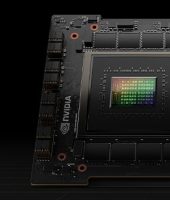Announced last year, Pawsey’s multi-tier storage, based on the largest research-focused object storage systems in the world, is now operational.
Besides more capacity, the new storage capabilities – known as Banksia and Acacia – deliver more flexible workflows and better performance, interoperability and scalability for Australian researchers.
The 130 PB multi-tier storage system, includes:
- Warm Tier – a disk-based system powered by Dell, named Acacia after Australia’s national floral emblem the Golden Wattle – Acacia pycnantha, providing 60PB of high-speed object storage for hosting research data online.
- Cold Tier – offline storage, named Banksia, after another Australian wildflower with a genus of around 170 species in the plant family Proteaceae, provided by Xenon, incorporating Pawsey’s current tape storage infrastructure, including two mirrored libraries each holding 70PB of data, duplicated for data security.
Among the changes introduced by the deployment and commissioning of Acacia and Banksia, a new application process is now available and eligibility to access has been extended to existing supercomputing, Nimbus and visualisation projects.
To facilitate the transition to the new infrastructure, new documentation has also been made available to researchers to show how to use the resources.
Training videos and workshops are being developed to support migration to and use of Acacia. Two videos are already available for you to start learning about the new service.
As part of this upgrade, /group filesystem will be decommissioned, and researchers must migrate their data heir data and workflows to Acacia before this occurs.
Acacia, also known as our warm-tier resource will be fully integrated with Setonix, enabling a better experience when transferring data between Pawsey Centre systems.

